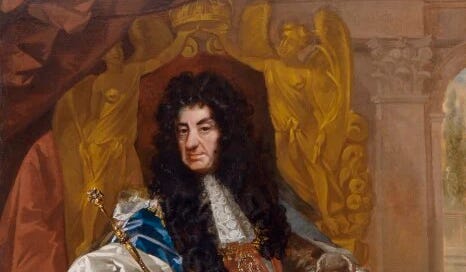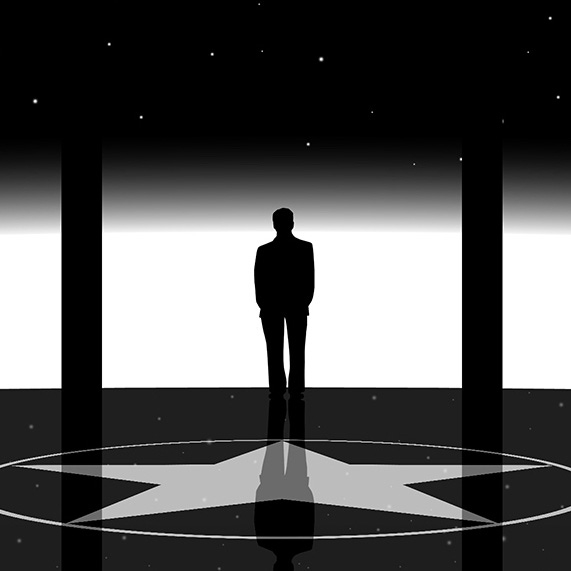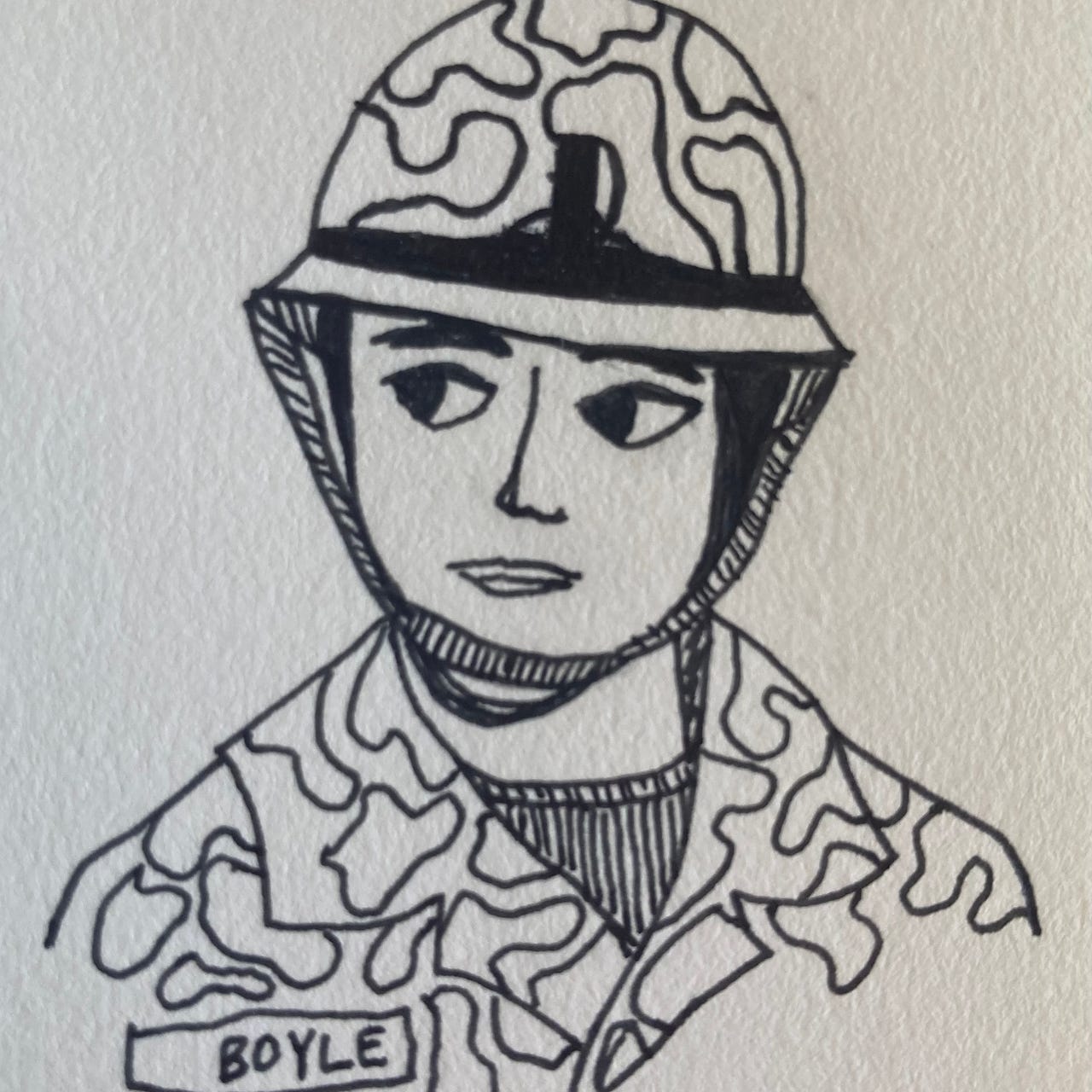The Set-Up
I’m going to reveal to you just about everything you need to know about current-day cultural theory. So please pay attention.
This post will let you in on what all the hubbub is about.
Do you ever wonder why MAGA-ites go to school board meetings to scream about stuff they have no idea in hell about? (Things like Critical Race Theory or Beloved.) Do you ever wonder how it is that rightwing blowhards like Trump or MTG (Mega Twit Goofball) can be so successful at riling up their hotheaded base to the point of delusional violence?
Well, I’m going to tell you right now: Queer Theory.
I’ll begin my explanation with a charming anecdote.
The Charming Anecdote
Anyone working in academia knows that you wind up attending a lot of “workshops.” More than mere “meetings,” workshops entail some pretense of active and collaborative learning where—so the theory goes—real skills are acquired. (If you’re hearing a smidge of skeptical tone in my narrative voice, well done.)
Absolutely mandatory in workshops are large pads of newsprint paper. (If the workshop is a fancy one, you’re going to have tall easels to set the pads on, too.) The purpose of these newsprint pads, of course, is for small groups of workshop participants to brainstorm ideas on various topics and then, with Magic Markers, write out those ideas as pithy phrases on the big sheets of newsprint.
This part of a workshop is a must.
After as much as 15 or even 20 minutes of this intensive free-associating, the small group leader carefully will tear out these concept-laden sheets of newsprint and masking-tape them to the wall for the world to see. Next, during the all-important “Report Out” phase of the workshop, whoever has convened the workshop will go around the room inviting each leader to run down the list of pithy phrases produced by each group. Sometimes there’s discussion. By this process, the brainfruit of all groups reaches, with edifying benefit, each and every participant in the workshop.
At this point, knowledge generated and capabilities enhanced, it’s time to eat cookies and go home.
At one such workshop I attended on Identity issues, participants were asked to select from a list of specific Identity positions (black, white, female, male, and so on) and break into the usual small discussion groups. More specifically, each group was to begin its deliberations with each member writing out (on—what else?—large sheets of newsprint) any words or phrases that person associated with that particular Identity position.
All fair enough. I chose to go with the group discussing QUEER as an Identity position.
This workshop was a mix of faculty and students—which always ups the desired learning-experience ante of the event. We’d been supplied with an abundance of Magic Markers (very fancy workshop), so we all started writing away at once on the newsprint pad. For my part, I had but one pithy idea to contribute. I wrote it out thus:
No normal
A student working beside me, a dude, said something like, “Oh, you forgot something,” and in a misguided effort to be helpful, leaned in and changed my pithy phrase to this:
Not normal
Seizing the teachable moment (rather than slapping the meddlesome fool upside the head), I put a bracket around the “t” he’d added, producing:
No[t] normal
I then engaged my teacherly patience to explain to the student—and to my entire small group and eventually to the whole workshop—the vital difference between these two ideas. That is:
No normal versus Not normal.
Once you understand what that vital difference is, you’ll be able to grasp not only the crux of Queer Theory, but just about everything you need to know about postmodern theory in general.
So here we go.
The Nuts and Bolts
Queer Theory (also called Queer Studies) emerged as a recognized theory of culture and literature in the 1990s. It builds on the work of Gay and Lesbian studies of the 1980s, which itself grew out of the Feminist movement starting in the 1960s. Although Queer Theory began by considering issues of sexuality, it soon moved on to investigate the social constructedness of everything. That is, the concept of Queer transitioned from being a noun (to be queer) into being a verb (to do queer). More will be said below about this important distinction.
That means that Queer Theory is all about radical relativism—to the point of calling into question the very concept of “normal” itself.
The basic assumptions of Queer Theory, then, are ideas and approaches to culture that we’ve covered extensively in previous Rants. Foremost is the idea that, to paraphrase from Conrad’s Heart of Darkness, “Mistah Plato—he dead.” That is, rejected is Plato’s Essentialism, a belief in stable and absolute and universal Truth. Instead, Relativity rules. Replacing the cosmic order and certainty of Plato as a way to look at our world are a range of modern and postmodern concepts and critical tools.
These Plato-killing viewpoints explained in my earlier posts include: the linguistic theories of Saussure, the cultural myths of Barthes, the analysis of ideology by Althusser, the unholy mess of Derrida (Part 1 and Part 2), and the examination of modern power by Foucault.
If you don’t have the time (or the inclination) to review this batch of intellectually invigorating, analytically enabling, spiritually soul-freeing, and personally elevating material, well, I guess I can understand...
In particular, practitioners of Queer Theory started to apply this arsenal of cultural theories to traditional views of sexuality and identity, challenging the status quo thinking on those matters. Rather than seeing gender roles and sexual practices as Platonic givens set in stone for all humans everywhere and everywhen, Queer theorists saw them as free-floating and varying Signifiers subject to the ever-shifting cultural circumstance of place and time.
As such, the practices of gender and sexuality are constructions of custom, language, and power. Not existential pre-settings intrinsic to our being.
Let’s go to an example.
The Clarifying Example
Two posts ago, I included a portrait of King Charles II of England (1630-1685). Here it is again.
As you can see, Charles is wearing an extravagant wig, shiny silk hose, colorful ribbons tied just below each knee, high-heeled shoes festooned with more ribbons, and enough flouncy and garish costuming to get him arrested in Tennessee as a Drag Queen.
Yet...
What you’re seeing here is a depiction of the Ultra Manly of the times. Charles is the chief Power Dude of his day. His portrait is intended to radiate, to celebrate, and to intimidate by allowing onlookers to feast their eyes on the epitome of hegemonic masculinity. In late 17th-century English cultural terms, Chuck is the Marlboro Man.
As for shifting standards of sexuality, the court of Charles II was broadminded to the point of open bi- and homosexuality. Although Charles himself seems to have coursed only after the Fine Ladies (as well as frequently visiting the brothels), his inner circle did not much bat an eye at carnal pursuits other than heterosexuality. Like displays of gender, socially acceptable sex acts differ by cultural context.
Now let’s compare Charles II’s envelop of gender and sexual circumstances with those of, say, Donald J. Trump—who certainly tries his damnedest to look the part of ultra manly power dude for our day. Trump attempts to personify 21st-century American hegemonic masculinity by dressing up in dark business suits and red neckties. He seems to be going for the He-Man Tycoon look. Or something like that.
While I’m sure Trump would call Charles II a sissy and a loser for dressing the way he does in that portrait, isn’t Trump primping every bit as much? Trump’s dark business suits are always a bit on the baggy side to conceal his weight. Trump’s red neckties are always a tad overly long to make him look taller. Obviously, Trump obsesses about his hair. Trump also applies orange makeup.
Who’s the Drag Queen now?
As for acceptable sexuality, Trump wouldn’t be caught dead associating with gay folk. Yet the proper erotic behavior of the MAGA Ideal Man seems to include sexual assault, wholesale cheating on your wife, and sizeable illegal payoffs to silence porn stars. Oh, what a Man Paragon is Don!
In sum, most practitioners of Queer Theory agree with Judith Butler that gender is a learned and performative act determined by cultural conventions, not the outward manifestation of an inner True Self. Moreover, with regard to sex, even the seemingly straightforward biological binary of male/female turns out to be problematic. In America, about 1 in 2,000 births each year are intersexed children. On which team do you assign these kids?
So much for the either/or thinking of Plato and friends.
The Big Finish
Since the 1990s, Queer Theory has expanded its analytical range. As a critical tool, its early applications to topics of sex and gender have evolved into investigates of—well—EVERYTHING. For Queer theorists, everything is subjective; everything is in constant flux. Nothing is objective or permanently fixed. We swim in an ocean of argumentation and debate.
Queer Theory, then, is pretty much Derrida’s concept of deconstruction on crack.
When using Queer Theory, you deconstruct until the cows come home. Then you deconstruct the cows. Then go ahead and pick apart the coming home part, too. This is why I think Queer Theory can be seen as a kind of umbrella practice common to all postmodern cultural theories. Postmodernism is all about taking a hard look at “normal”—that is, at The Regime.
But I still need to tell you about one more aspect of Queer Theory.
As a cultural theory, Queer has come to be divided, sometimes uncomfortably, into two camps. As mentioned above, one camp uses the term queer as a noun—that is, as an identity position within society. The other camp uses the term queer as a verb—that is, as an action to be implemented on society.
The goal of both camps is social justice and equality, particularly for people who do not identify as “straight.” The worthiest of goals. I lean toward the queer as a verb camp, though. Why?
Because equal is not the same as normal.
Please don’t get me wrong. The queer as a noun camp performs vital work in its considerations of the lived experience of LGBTQIA+ folk in the brave fight for recognition and equal rights under the law. Kudos, kudos, and more kudos.
However, rather than striving to normalize these alternative positions as stable, Platonic, essential identities alongside heterosexuality, I think a stronger and more effective strategy is to de-normalize “straight.”
That is to say: queer it.
In the example above of Charles II and Donald Trump both playing masculine dress-up within their two very different cultural contexts, Trump got queered. (That’ll drive him nuts.) What I mean by that is: I de-normalized the way Trump presents himself. I deconstructed our “normal” assumptions about hegemonic masculine presentation and behavior by demonstrating how The Donald is not manifesting a core, inherent, timeless, universal Man Essence (a new Dior eau de toilette???). Instead, forty percent of voters’ favorite convicted felon is only performing today’s version of Alpha Male.
This is what I mean by the subtitle of this post: The Craft of Queering. Applying queer as a verb in order to carry out a critical unveiling and debunking of “normal.”
“Normal” is a term of Power that disallows equality. “Not normal,” then, is a statement of exclusion, of mistrust, of bigotry, of hatred, of violence.
On the other hand, the skill to queer seeks to level the battlefield in the struggle for equality. “No normal,” then, is a statement of inclusion, of solidarity, of acceptance, of kinship, of peace.
Just my take on things.
Whatever your views—whether you use queer as a noun or as a verb—Queer Theory undertakes a perpetual critique of Power and thereby always represents an acute challenge to the status quo.
And that’s why Queer scares the shit out of rightwing conservatives.
COMING IN TWO WEEKS: one lucky idiot...
AND DON’T FORGET...
Read some provocative fiction. Check out and subscribe to my other Substack newsletter, 2084 Quartet at:
While you’re at it, read some provocative social commentary. Check out and subscribe to this absolute Substack gem as well:








Brava!